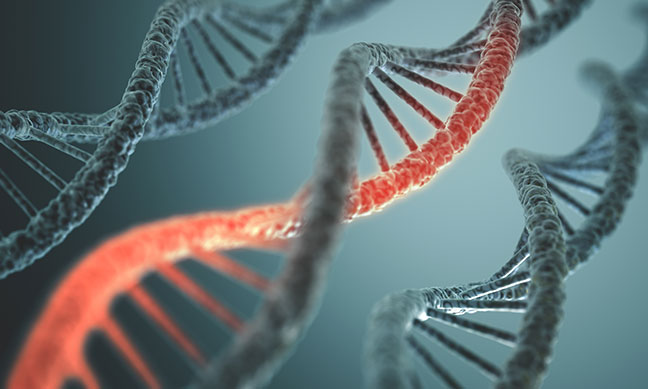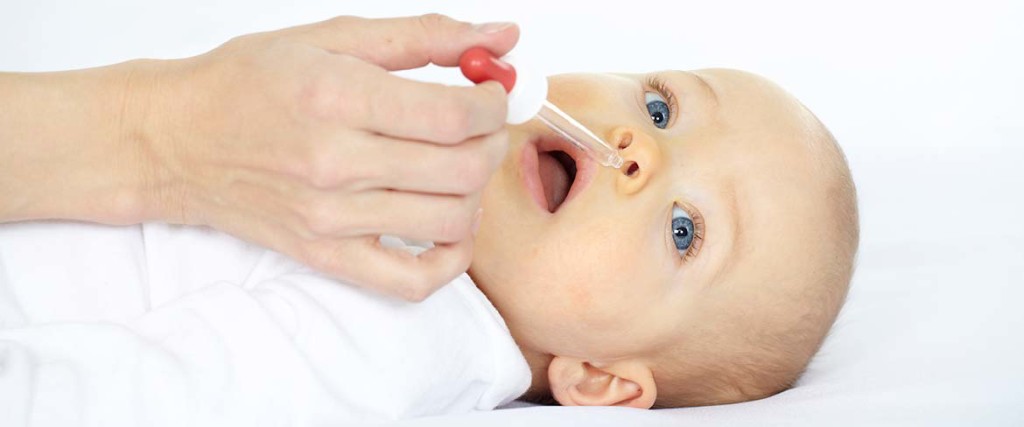
By Jamell Andrews
We think of a baby’s cradle as the safest place on earth, after mommy’s arms. But sadly, many babies encounter very real danger in the crib, and these hazards prove fatal far too often.
Read More
We think of a baby’s cradle as the safest place on earth, after mommy’s arms. But sadly, many babies encounter very real danger in the crib, and these hazards prove fatal far too often.
Read More
Having a toddler can be frustrating. When they need something, they don’t yet have the vocabulary to express their needs in a way you understand as a mom. This can lead to a series of battles you may not even need to fight in the first place.
There are a couple of ways you can handle communication in a way they can understand, and it will make your life as a parent so much easier.
Read More
Chromosomes are structures that carry our genetic material, and more specifically, genes. They are located within every cell of our body, within a structure called the nucleus. When there is an abnormality in the structure or number of one or more chromosomes, this is called a chromosomal anomaly, or abnormality. These abnormalities can occur either at the time of fertilization or during pregnancy and cause negative effects on the growth and development of the baby.
A chromosomal abnormality differs from a single-gene genetic disorder in that an individual can have the normal number of chromosomes, 46, that are structurally sound and still have a genetic disorder. This is because there is a mutation of only one gene, located on a chromosome, that does not affect the structure or number of chromosomes.
Read More
by Alicia Kenny
New baby? Lactation, or breastfeeding, is not only a natural, healthy way to provide the perfect mix of nutrients, hormones and proteins for your newborn, but it also creates an invaluable opportunity for mother and child to bond and develop emotional intimacy. Here are the basics:
Besides the emotional and psychological benefits of lactation for both you and your little one, there are numerous positive physical effects for the two of you as well. For one thing, breast milk, which has been called the “gold standard of infant nutrition,” contains fatty acids essential to healthy cognitive development and visual acuity. Breastfed babies have a decreased likelihood of developing intestinal infection, eczema, allergies and dental problems. Mother’s milk contains antibodies that help protect the baby from illness and in the case of premature and critically ill babies, it is extremely important not only for the infant’s nutrition but also for the child’s very survival. Breastfeeding may also help prevent childhood obesity!
Lactation is of great value to mothers also. Postpartum hemorrhage is prevented and uterine involution (the return to a non-pregnant state) is promoted. Breastfeeding mothers also have a decreased risk of developing breast cancer, ovarian cancer, uterine cancer, heart disease and iron-deficiency anemia. Breastfeeding will help prevent another pregnancy from occurring within the first six months after his or her birth ensuring that the mother will have plenty of time to recover physically before her next pregnancy. Finally, as milk production uses an average 200-500 calories per day, breastfeeding can contribute to the loss of excess weight gained during pregnancy, a boon that has given many new moms something else to smile about! If you do make the choice to breastfeed, be sure to discuss your decision with your pediatrician or lactation consultant. Also, be aware of organizations and consultants that exist to help you with questions or problems that may arise. Two such resources are:

by Alicia Kenny
Hello New Mom! It’s you and Baby now, so you’ll want to eat what’s best for both of you. Keep in mind that while you are eating for two, only one of you is a full grown adult so you will probably only need to take in an extra 200-300 calories per day while pregnant. The bottom line? Do eat for two, but don’t overeat.
In general, you should eat a healthy, well-balanced diet full of whole grains, fruits, vegetables, protein, foods rich in vitamin C, iron and calcium plus plenty of water. While you don’t need to eliminate salt and fat from your diet, you should take care to eat salty foods and high-fat foods only sparingly.
Also, as an expectant mom, you’ll want to make sure to take the prenatal vitamins prescribed by your physician and pay attention to your intake of folic acid in particular. Folic acid is a member of the B vitamin family and occurs naturally in orange juice, green leafy vegetables, beans and lentils. The synthetic form of folic acid, which is more easily absorbed by your body, can be found in fortified breakfast cereals, enriched grain products and vitamins. Folic acid helps prevent and decrease the risk of several common birth defects and supports rapid growth of the placenta and fetus.
Read More
Getting your toddler to perform toileting independently is a welcome milestone for any parent. Few of us want to be changing diapers much past the child’s second birthday. However, children vary greatly in their adoption of the potty routine which is influenced by a child’s innate ability, aptitude and maturity. However, there several tips and techniques you can use to hasten the blessed day when your toddler says: “Mommy, I did potty by myself”.

Congratulations, you’re pregnant. As the count-down to the birth of your new child approaches, you should consider finding a pediatrician who will work the best with your soon to be expanding family. Having a pediatrician on-hand though the formative weeks and years of your child’s life is in the best interests of both you and your child. Waiting until your child gets sick or needs a check-up is absolutely not the time to be going through the selection process, which can be stressful even when everything is going according to plan.
There are several sources you can tap into to locate qualified pediatricians in your community.

by Pat Bratianu, RN Ph.D. RH-AHG
Gripe Water is a liquid that is used to treat infants who are experiencing colic, gastrointestinal discomfort, reflux, teething, hiccups, indigestion, and other stomach irritants. It is commonly made with water, sugar, sodium bicarbonate, dill oil, and in the past was made with alcohol although most gripe waters have eliminated the use of this ingredient. Some Gripe Waters are made using all natural ingredients such as chamomile, fennel, caraway, peppermint, ginger, aloe, lemon balm, blackthorn and vegetable carbon so as to eliminate any unnatural ingredients that may harm their baby’s overall health.
The first Gripe Water was formulated by William Woodward in 1851, and contained 3.6% alcohol, dill oil, sodium bicarbonate, sugar, and water. Woodward was born in Stamford in 1828, and later apprenticed under pharmacist John Halliday Thomas of Boston where he served seven years and learned everything from business to the practice of pharmacy. After his apprenticeship he moved to London, and in 1851 purchased a pharmacy in Nottingham.
Woodward was well known and respected for his creation of remedies and simple ailments, and had many early successes including gripe water. He gained inspiration for the gripe water formula from a recipe that a group of Nottingham doctors were using to treat Fen Fever also known as malaria. It was not until later that it was noted that Woodward’s gripe water formula was not just effective for the treatment of malaria, but also towards the treatment of gastrointestinal discomfort in infants.
Read More“Baby Blues.” “Depressed.” “Sad.” These are all ways to describe postpartum depression, which can kick in about five days after a newborn’s delivery, and usually goes away after two weeks. For some mothers (and dads!), postpartum depression is much more serious and treatment is needed. A new mother with postpartum depression will often feel sad, guilty, worthless and take no interest in her new baby. These moms feel shamed for feeling this way, and are too embarrassed to seek help. As a result, postpartum depression can be overlooked.
A 2006 study done by Brown University shows that it is vital for mothers who have the baby blues get professional help. Why? The study says there can be a link between a mother’s depression and a colicky baby. The study, which is funded by the Centers for Disease Control and is run by the state of Rhode Island, consists of a survey titled “Pregnancy Risk Assessment Monitoring System.” The idea behind it is to help prevent infant mortality and ask about health and environmental factors in the baby’s household that may impact his, as well as the mother’s, health. The survey had already asked about depression, but in 2006 a new question was asked, “How inconsolable is your baby?” From these answers, it was determined that those mothers who were depressed also commented that their baby was very inconsolable, or, colicky.
Read MoreAs a new mother, you’ve probably heard that “breast is best” and when it comes to preventing food allergies in your new baby, this is especially so. Though allergies have been on the rise with children (1 out of 5 will usually develop an allergy by the age of 20), it has been shown that those children who were breastfed are less likely to develop allergies.
Babies tend to develop and allergy to those foods which they try first. Since a breastfeed infant is receiving trace amounts of what the mother eats, the likelihood of that baby developing an allergic reaction to solid foods diminishes. However, every baby is different–for example, if a mother eats peanuts and then nurses, the baby could, in extreme cases, go into anaphylactic shock.
It’s important to keep in mind that having an allergic reaction to food and having an irritant due to the food are two separate things. An irritant will cause a temporary reaction, while an allergen (a substance which causes an allergic reaction) will be more severe and longer lasting. For instance, a child may be fussy due to gas which was a result of the mother eating broccoli. This would be considered an irritant, not an allergen. The most common irritants are chocolate, cruciferous vegetables, onions and bell peppers. However, foods that babies can have an allergic reaction to are cow’s milk, soy, wheat, corn, shellfish, citrus fruits, eggs and peanuts. Also be wary in trying foods that other family members are allergic to, as the likelihood that the baby will be allergic to it as well is increased.
When trying to see if a baby is sensitive to a certain food, a mother must keep in mind that fussiness caused by food is different from normal baby fussiness. If it’s a reaction to food, then the baby will be irritable directly after feedings. They may cry non-stop for long periods of time, sleep very little, or, when they do go to sleep, wake and seem very uncomfortable. Other allergy signs are:
Read More